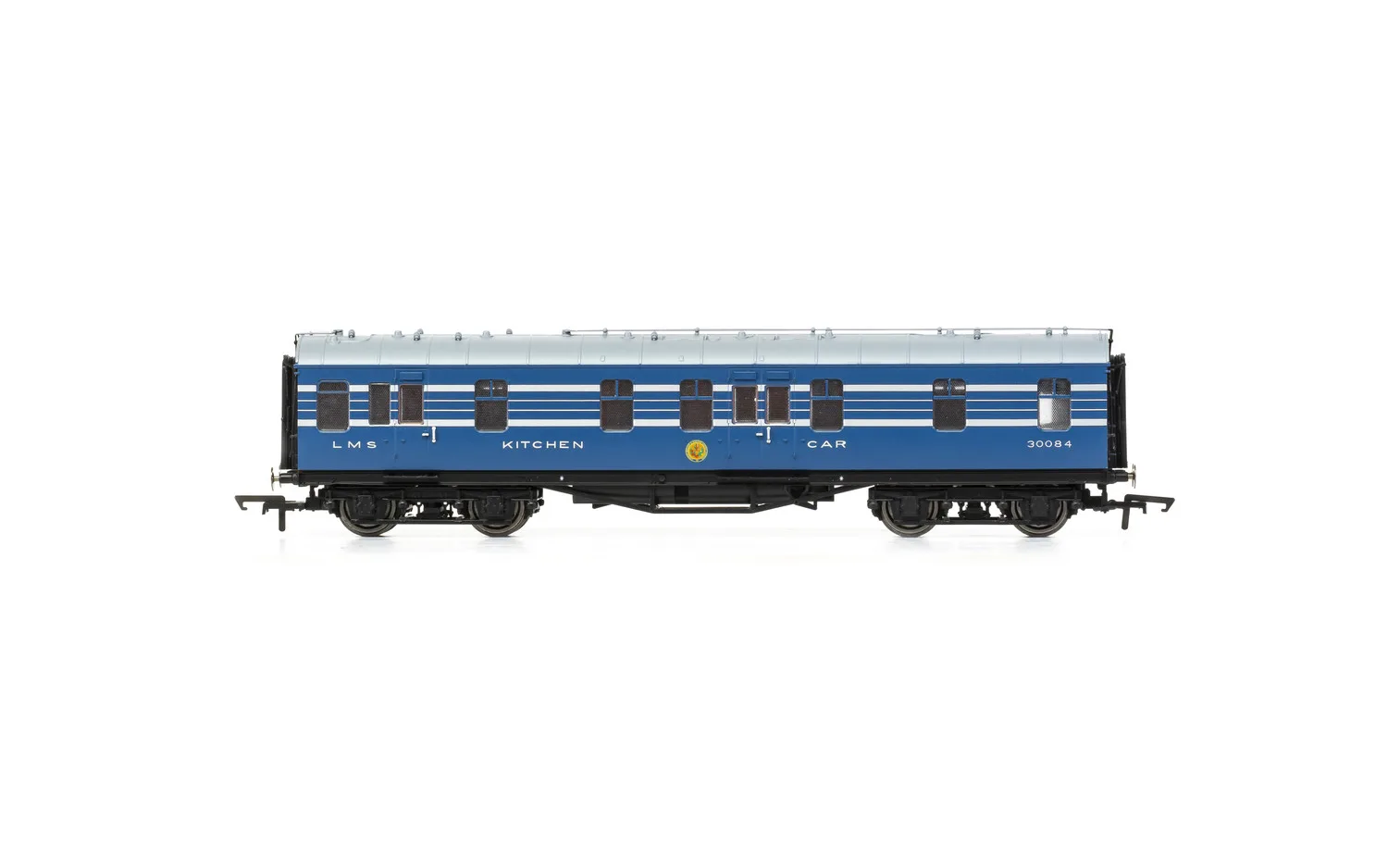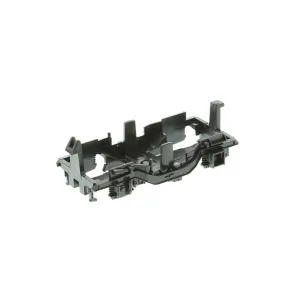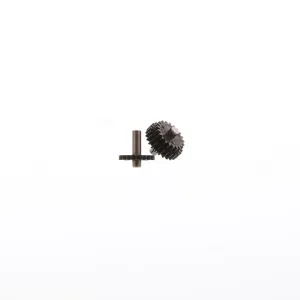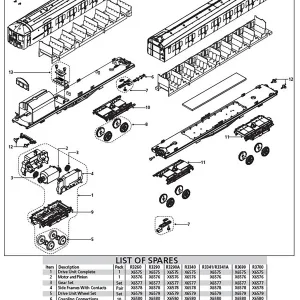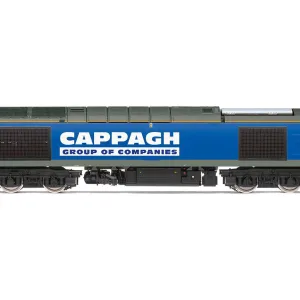LMS, Stanier D1912 Coronation Scot 50′ RK, 30084 – Era 3
In response to the London & North Eastern Railway’s ‘Coronation’ sets which were hauled by their A4 Pacific locomotives, the London, Midland, Scottish Railway Board announced the advent of a similar train, the ‘Coronation Scot’, to run over their route. This would be covering the 4 miles between Euston and Glasgow in 6 hours, at an average of 61.7 miles an hour. The train ran non-stop between Euston and Carlisle, covering the 299.1 miles in 4 hours, 43 minutes at an average speed of 63.4 mph which, in 1937, was the longest booked run at over 60 mph in the world.
On 29 June 1937, on a test run between Euston and Crewe, an eight car ‘Coronation Scot’ hauled by 6220 ‘Coronation’ set a new world record speed for a steam train of 114mph, briefly seizing the initiative from the LNER by just 1mph. Full service of the full nine car ‘Coronation Scot’ commenced on 5 July 1937and continued uninterrupted until 3 September 1939- the outbreak of war against Germany.
The full ‘Coronation Scot’ train consisted of nine cars, the formation (from the London end) being:
- Brake Corridor First (BFK)
- Corridor First (FK)
- Restaurant Open First (RFO)
- Kitchen (RK)
- Restaurant Open Third (RTO)
- Restaurant Open Third (RTO)
- Kitchen (RK)
- Restaurant Open Third (RTO)
- Brake Corridor Third (BTK)
Three sets of coaches were to be provided for the ‘Coronation Scot’, with any two sets operating at one time, with the other being spare. Unlike the LNER’s ‘Coronation’ sets, most of the coaches for the ‘Coronation Scot’ were selected from the latest new batches of Stanier’s Period III stock, with the exception being the FKs and BTKs, which were built new for the service.
The selected coaches were sent to the LMSR’s Wolverton works where they were converted for service. Outwardly, the vehicles were unaltered across the body and underframes. However, the interiors were completely refitted to a luxurious standard befitting the service and, apart from the RKs, pressure heating and ventilation systems were installed for the passengers’ comfort, the coaches’ roofs featuring boxed ventilation shrouds. Lighting was improved, bell pushes added for steward service and the coaches finished in a Caledonian Blue and Silver striped livery to match the five streamlined Stanier Coronation Pacific locomotives chosen to haul the ‘Coronation Scot’.
At the outbreak of war in September 1939, all three sets of coaches were moved into storage, two sets at Horwich and one at Lostock Hall, which proved to be the last time that the coaches were together as sets. When they were reintroduced to service in 1947 they were repainted into LMS maroon and put into ordinary service ‘on the best passenger trains’, the LMSR being unable to reintroduce high speed working at that time due to the rigours of war-time working on the permanent way structures.
It had been suggested that some of the First Class vehicles could be converted into three-a-side seating, however H.G Ivatt, the new CME of the LMSR, discounted this based on the costs involved. All of the ‘Coronation Scot’ coaches were eventually scrapped, the first examples being withdrawn from service in 1962, with the exception of two of the RK vehicles; 30088 and 30106. These two coaches were converted into Inspection Saloons and both survive to this day as preserved examples.

